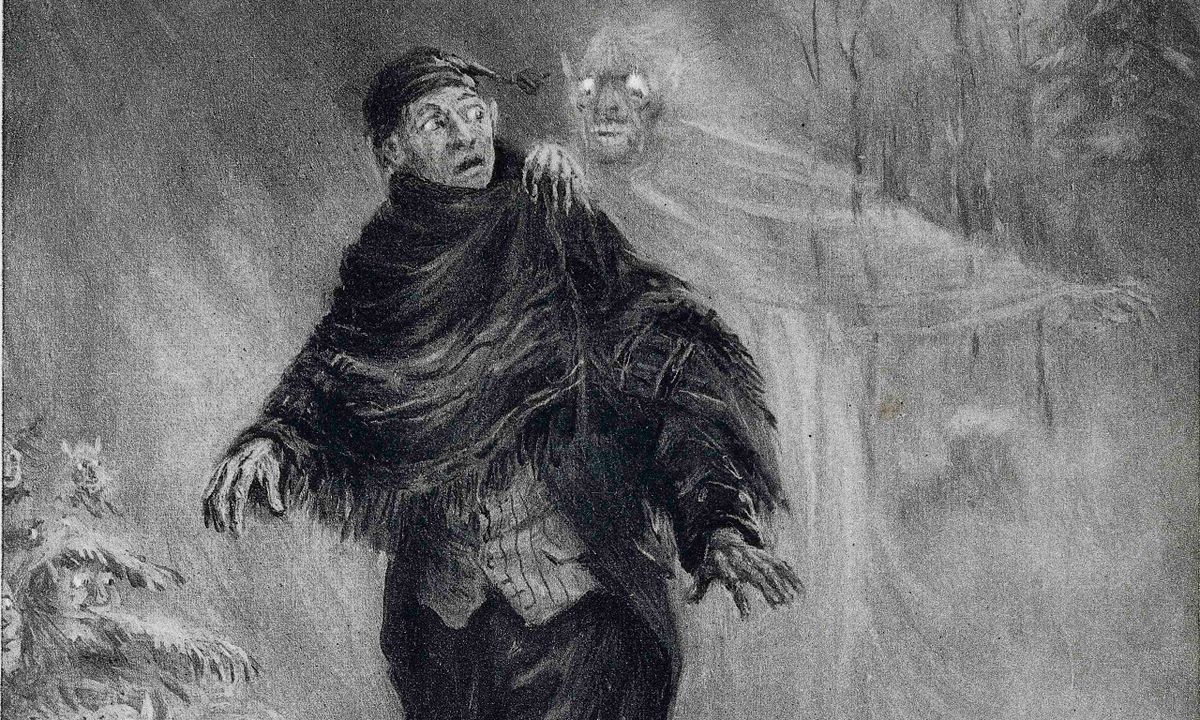
 This week, Bookhound enjoys the festive pleasure of a spooky story by the fire...
This week, Bookhound enjoys the festive pleasure of a spooky story by the fire...
"It was nine-thirty on Christmas Eve. As I crossed the long entrance hall of Monk’s Piece on my way from the dining room, where we had just enjoyed the first of the happy, festive meals, towards the drawing room and the fire around which my family were now assembled, I paused and then, as I often do in the course of an evening, went to the front door, opened it and stepped outside.”
So begins The Woman in Black, Susan Hill’s ghostly gothic masterpiece. While sitting around the Christmas fire, the narrator’s children have begged him to share in their game of swapping ghostly stories- but the details of what Arthur Kipps witnessed many years ago at Eel Marsh House are too terrifying to disclose to his family. Instead, he writes down an account of his experiences, in the hope that it will exorcise the memories that have haunted him since the day he arrived at the desolate and isolated house, cut off at high tides from the outside world by a foggy causeway and haunted by the spirit of a vengeful ghost. in 1983, but set in Edwardian England, the story of The Woman in Black has become a modern classic, inspiring two film adaptations and a stage play (the second-longest running production in the UK after the Mousetrap). It’s no coincidence that Susan Hill chose to open her story on Christmas Eve- from Dickens to MR James, Yuletide has inspired many of our favourite writers of ghostly gothic thrillers. There’s something about the nights drawing in and the festive season approaching that lends itself to indulging in spine-tingling supernatural tales.

Although today Halloween is the festival we associate with ghosts and the supernatural, in the days when families had to make their own entertainment it's not hard to imagine why the cold and darkness of midwinter, a family and friends gathered together around a fire (usually the one source of heat in the house) and perhaps a glass or two of festive rum punch might lead to the telling of tall tales and competition to tell the most eerie tale. This tradition stretches back many hundreds of years, but it was the Victorians who really embraced the art of the Christmas ghost story. The most famous of these is of course Dickens' A Christmas Carol, but writers such as MR James, Edgar Allen Poe, Elizabeth Gaskell and Henry James also wrote hugely popular ghost stories either set in the Christmas season, or framed as a story told around the Yuletide hearth to an expectant audience.

It was this latter convention that Susan James drew upon when writing The Woman in Black, and our fascination with the mysterious and macabre in the dark winter months endures. Taking The Raven, Edgar Allen Poe's wintry tale of suspense, as a source of inspiration Stephen King set The Shining, arguably his most terrifying horror classic, in an isolated hotel in the frozen midwinter of the Rocky Mountains. And he is not the only contemporary mystery writer who has taken inspiration from their Victorian forebears; Elly Griffiths' The Stranger Diaries, and Peter James' Sweet Heart also take the best elements of the gothic novel- haunted houses, swirling mists and long-buried secrets- and place them in modern-day settings. The spirits in our best-loved ghost stories, and the characters that they torment, don't have to be wearing period dress for them to fascinate and frighten us.
These days of course we might be more likely to watch a family film on Christmas Eve than tell scary stories around the fire, but you can still indulge in the pleasure of a chilling tale from the comfort of your cosy living room by curling up with a good book. Who knows, perhaps you will find inspiration for some scary tales of your own to tell?
Would you like to post a review of one of our Gothic Suspense novels? Or Do you have any winter chiller ghost stories of your own to share? Let us know in the comments!

Leave a comment